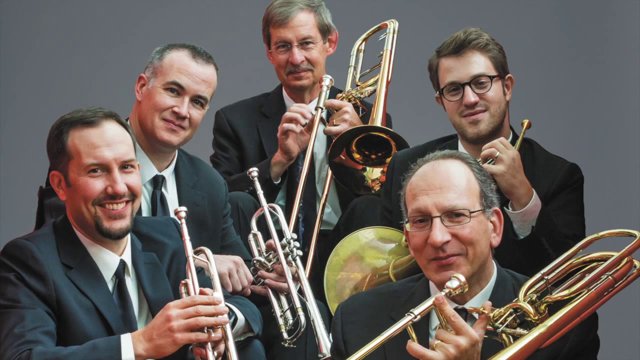
There are many roads to God, as biblical tradition would have it, and during the Middle Ages, one of the most important literal paths to Christian devotion, as well as papal indulgence, was the road to Santiago de Compostela in northwestern Spain.
It’s still a pilgrimage people take (including an American cellist, Dane Johansen, who traveled the 600-mile road in 2014 and performed the six Bach cello suites along the way at various stops), but if its role in the religious commitment of the traveler is not what it once was for every pilgrim, we can look back with our ears to a time when it was.
In the opening program of its 17th season, the Miami concert choir Seraphic Fire presented music associated with the road and the cult of St. James the Greater stretching back to the Codex Calixtinus, compiled around 1170, and ending in the High Renaissance of Tomás Luís de Victoria – and including the world premiere of a piece by the Australian-Canadian composer Julian Revie of the scriptural Advent texts known as the O Antiphons. The choir was joined by the expert American Brass Quintet, perhaps the leading such fivesome in the country, a group that boasts a vast discography and a distinguished dedication to new American music.
Seraphic performed these works of primarily Spanish origin Thursday night to a modest crowd at St. Gregory’s Episcopal Church in Boca Raton, where the choir will present four of its eight programs this year in another bid to establish a regular beachhead in Palm Beach County. No fewer than 18 short works were on the program, one following another without applause, as director Patrick Dupré Quigley requested of the audience; there were short transitional pieces of music between some of those works in the form of organ music by the blind Spanish Renaissance composer Antonio de Cabezón, played ably here by Scott Allen Jarrett.
Beginning with music from the Codex Calixtinus (O lux et decus Hispaniae) and the 14th-century Catalan compilation known as the Libre de Vermell de Montserrat (O Virgo splendens), Quigley moved the music along briskly through the Renaissance and up to the present, then back to the distant past before ending in two radiant anthems of Victoria, made especially so by the power of the brass quintet. Renaissance polyphony is Quigley’s “heart” music, and there was an abundance of it on this program.
As always with the accomplished professionals who make up the various iterations of Seraphic Fire, the singing was precise and beautiful, and one had the opportunity again to marvel at the sheer skill with which these vocalists can switch between various traditions and techniques and still present a unified sonic front. The three Codex Calixtinus selections, for instance, were primarily chant, while the two from the Libre de Vermell ventured into the early harmonic style known as organum; the five rich, complex works of Victoria were sung with majesty and warmth, while three works by Victoria’s contemporary, Sebastián de Vivanco, bore a much lighter, more madrigal-like style even with sacred texts. Quigley and the singers responded to all this admirably, with clear differences in approach and a smooth, full sound for each work.
The world premiere piece, Revie’s Veni, fit in the middle of all that 16th-century intensity quite well. Composer-in-residence at Yale’s St. Thomas More chapel, Revie – who has completed degrees in biochemistry, biophysics and composition – is a writer of considerable technique and a precise ear for telling choral effect. The seven antiphons that supplied the texts are part of the Advent tradition, and from the very first minor-second cluster that begins the work and then ebbs and flows after that around the word “Veni,” Revie sets up a shimmering, expectant sound that reflects in a very immediate way the hopes of the would-be redeemed crowding up against each other in barely restrained joy.
Like a good deal of contemporary composition, Veni is concerned more with sound picture than a narrative arc built on melody, and so the piece proceeds in screen-swipes of color as the various antiphons are intoned, with lines much like ancient chant, and well-calculated writing for the brass. Toward the end, the chorus is murmuring “Veni” just before the last words of the text, and the music turns much more forceful and climactic, which came off as something of a miscalculation, even though the words invite that kind of response.
The repeated “Veni” incantations before the last section seemed to me to be an ideal place to end the piece, leaving the auditor with exactly the right feel for the passionately religious, casting aside all formal addresses to God in favor of the simple word “Come!” The ABQ and the singers gave Revie’s work a brilliant performance.
At some points, Quigley was pushing through the lineup too fast, particularly early on, which made it harder for listeners to appreciate the pieces they had only just heard. A few more seconds to let each piece make its impact likely would serve the music better. The American Brass Quintet was in fine form Thursday night, featured first alone in a polished reading of “The Rose and Crown,” the first movement of the Colchester Fantasy by the American composer Eric Ewazen.
Seraphic Fire performs A Spanish Pilgrimage at 4 p.m. today at the South Miami-Dade Cultural Arts Center in Cutler Bay. For more information, visit seraphicfire.org or call 305-285-9060.